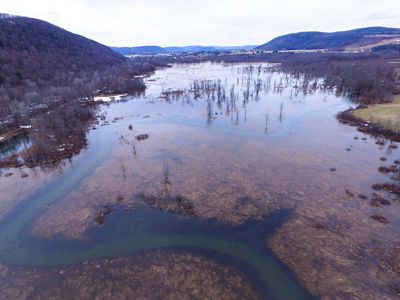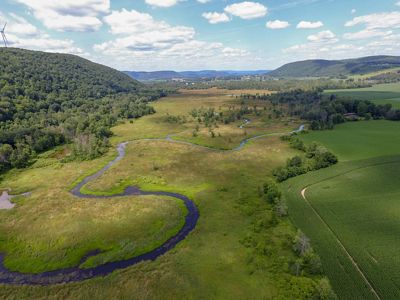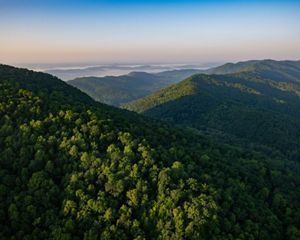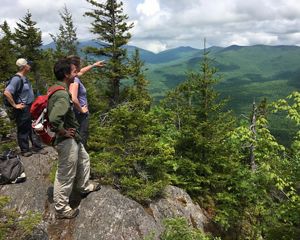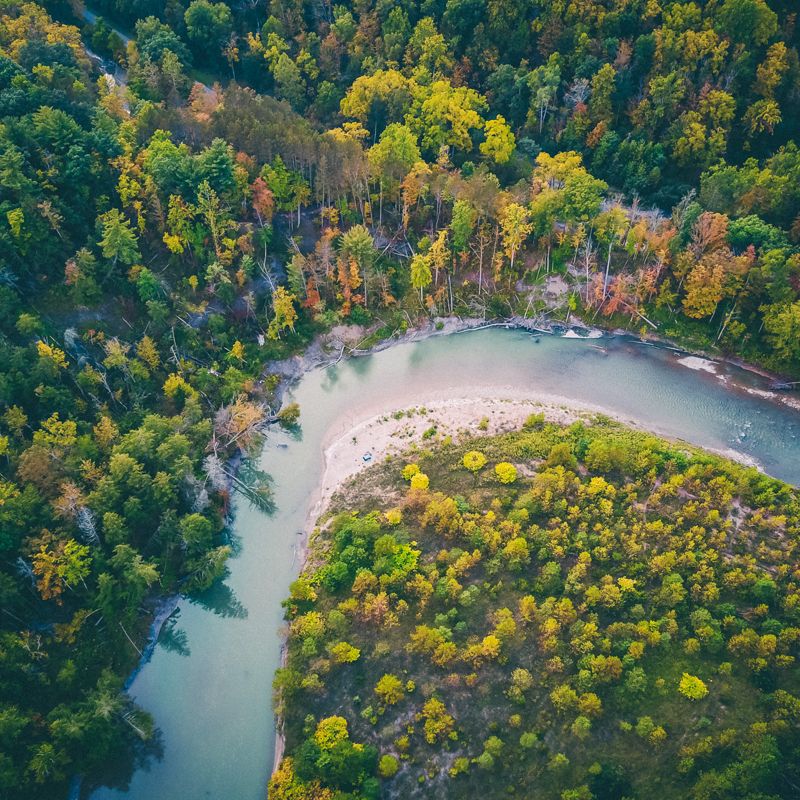
Climate Resilience Grant Program
Supporting New York based organizations in tackling climate change.
Our climate is changing—and strong, frequent storms, heatwaves and droughts are here to stay. Rising water levels and eroding lands are impacting communities across New York, threatening homes, local businesses and farms. Landscapes are being altered, and plants and animals are migrating, shifting their ranges northward and to higher elevation.
How we care for our lands and waters in New York matters now more than ever. New York’s forests, rivers and marshes are crucial habitat, providing food, protection and the necessary space for species to adapt and migrate. And floodplains and shorelines that function naturally and dynamically can keep people safe from flooding and other risks.
2026 Climate Resilience Grant Program
Program Guidelines and ApplicationTo use the power of nature to address climate change, The Nature Conservancy’s Climate Resilience Grant Program helps conserve lands and waters that provide multiple benefits, such as mitigating floods, providing migration corridors on the land and in the water, storing and sequestering carbon, improving water quality and offering opportunities for recreation and education. The program also provides funding to support innovative, climate-focused planning, strategy development and capacity-building.
As climate change continues to impact communities, the grant program strives to center the specific needs of people and places.
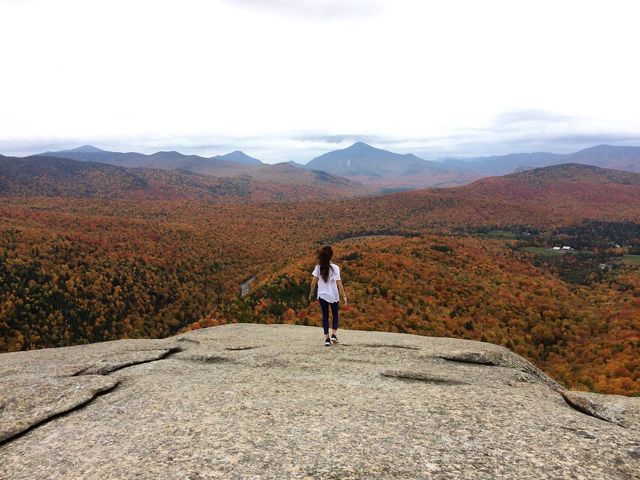
Connecting Climate Resilient Lands in New York
Over the past 10 years, more than 100 scientists at The Nature Conservancy mapped the Resilient and Connected Network—a network of landscapes that cover 33% of the continental United States with unique topographies, geologies and other characteristics that can help withstand climate impacts. This roadmap—which you can view using The Nature Conservancy’s Resilient Land Mapping Tool—shows where plants and animals have the best chance to move away from growing climate threats and find new places to call home.
In New York, The Nature Conservancy is acting quickly to conserve crucial migration corridors and connection points in the Resilient and Connected Network. Our Climate Resilience Grant Program provides financial support to community-based organizations pursuing climate resilience and connectivity-focused projects. We’re also working with Department of Transportation and Fish and Wildlife agencies across eight states in the northeast to provide their staff with the science and tools needed to identify opportunities for wildlife-friendly infrastructure improvements and trainings and resources to support connectivity planning and implementation.
Making Way for Wildlife
Mammals with larger home ranges must travel further for food, mates and other necessities. They thrive when they can migrate through connected forests, rivers and other landscapes. Sometimes called “umbrella species,” these animals help scientists identify land connectivity opportunities and areas for improvement. If umbrella species’ needs are being met, or not, other species are likely experiencing similar impacts.
New York is home to a number of umbrella species including bobcats, moose and fishers. These mammals rely on migration corridors within the Resilient and Connected Network to survive and thrive.
Bobcats
These wild cats are more adaptable than other species you might encounter in New York’s natural areas. They’re more flexible when it comes to habitat, often using farmlands and adapting to the presence of people, making it easier for them to travel between forests.
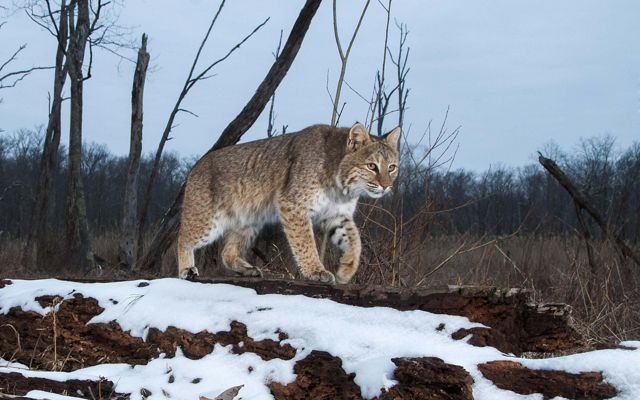

Moose
In New York, moose are most frequently found in the Adirondacks and the Berkshires. They are an important species to research when determining land connectivity because of their tendency to migrate far distances.

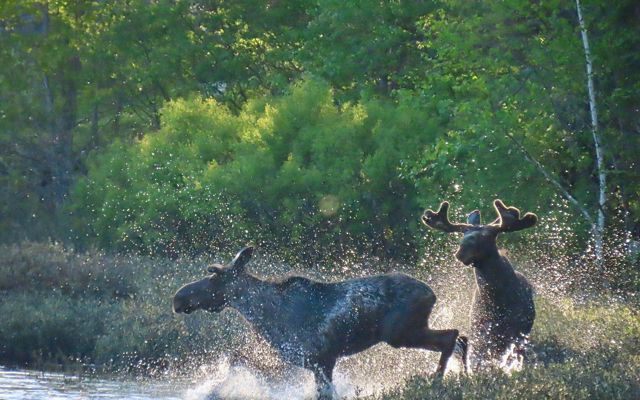
Fishers
Fishers are often found in bigger and more mature forests. This mammal’s needs illustrate the urgency of keeping older forests intact—especially forested connections that allow for travel and migration between habitats.

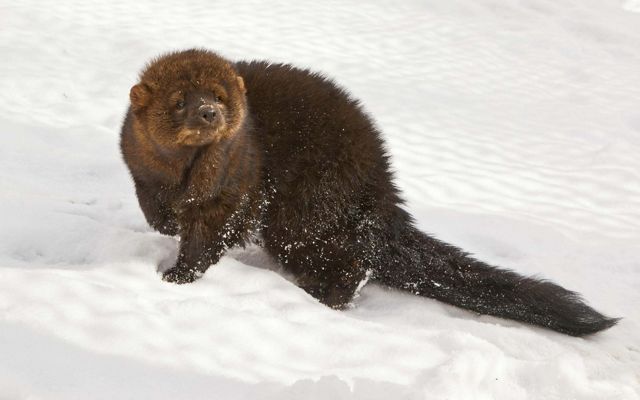
Helping Local Communities Adapt
Protecting and conserving natural areas in New York, especially in the face of climate change, improves the quality of life for people and communities throughout the state. In addition to supporting projects that connect lands and waters, the Climate Resilience Grant Program supports projects that protect natural floodplains and shorelines from new development that could limit their ability to reduce flooding and storm damage. We preserve these critical areas—including projected future floodplains and shorelines—through land acquisitions and conservation easements, and by helping other organizations protect additional lands.
These grants can help local communities and organizations ensure climate resilience benefits—including flood protection and access to nature—reach neighborhoods and communities more equitably. By accessing funding via the Climate Resilience Grant Program, communities can find ways to cope with the effects of climate change while also improving their overall access to landscapes, parks and nature trails for recreation and enhanced community well-being.
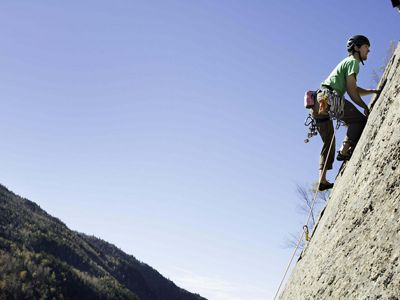
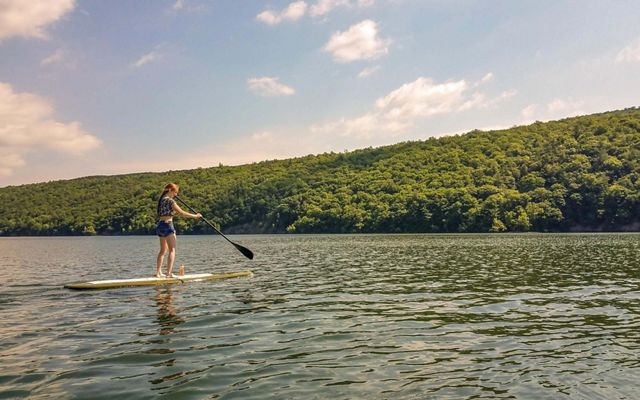
New York: The Game-Changing Connector in the Appalachians
Conservation strides made in New York will have lasting impacts—not just for our state, but for the long-term health and climate resilience of the Appalachians. The Appalachians are one of the most biologically rich areas on the planet, providing habitat for almost 20,000 plant and animal species. More than half of the East Coast's sequestered carbon is stored in the Appalachians, and it is home to the largest remaining tracts of temperate broadleaf mixed forest in the world. The region provides clean drinking water for more than 22 million people and generates $25 billion in recreational opportunities for residents and visitors.
New York acts as a key connecting geography within the Appalachians, linking its central and northern regions. Without New York, critical connections between landscapes would be lost. Heather Furman, director of The Nature Conservancy’s Appalachians Program, explains how the Climate Resilience Grant Program plays a supporting role: “Localized grants allow us to foster key partnerships and improve our ability to protect land within the Appalachians in New York. New York is a place of innovation and leadership, where new ideas can be tested and exported to other parts of the Appalachians. I’m excited to apply new ideas and lessons learned from New York to other communities throughout the Appalachian region in the months and years ahead.”
Grants to Advance Connectivity and Resilience
Supporting New York-based non-profit 501(c)(3) conservation and community organizations, municipalities, State and Federally Recognized Tribal Nations and local and state agencies, the Climate Resilience Grant Program provides grants of up to $50,000 to protect the lands and waters essential for adapting to climate change. The Nature Conservancy recognizes the particular challenges faced by communities with limited capacity, infrastructure and resources for adapting to and mitigating climate change. The Climate Resilience Grant Program seeks to fill some of these funding and resource gaps. In its first three years, the program has funded 39 projects with 23 organizations, providing roughly $1.2 million in funding.
Rensselaer Plateau Alliance
Climate Resilience Grant Program funding is helping the Rensselaer Plateau Alliance cover costs related to the long-term care of nearly 200 acres in the Boehme Legacy Forest donated to the organization by family members who grew up on the land. This project ensures that this extremely diverse forest stays intact and avoids future development, providing crucial wildlife habitat and increasing the climate resilience of surroundings neighborhoods and communities. This forest’s varying landscape will also offer countless recreational opportunities for the local community to hike and experience nature.
Jim Bonesteel, executive director of the Rensselaer Plateau Alliance, said, “The Nature Conservancy has been a fantastic partner, and the grant application process is straightforward and easy to navigate. The flexible funding from this grant is especially meaningful because it will allow our organization to plan for the long-term stewardship of the park. People are going to love visiting this property. By having a strong stewardship plan in place, we’ll be able to further engage nature enthusiasts and budding conservationists—and grow our community of supporters.”
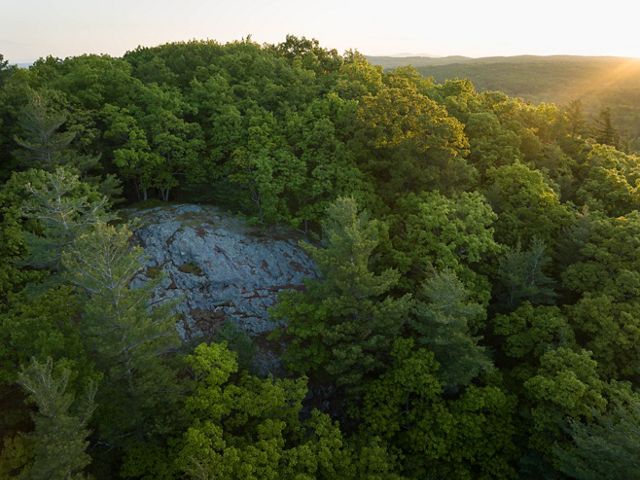
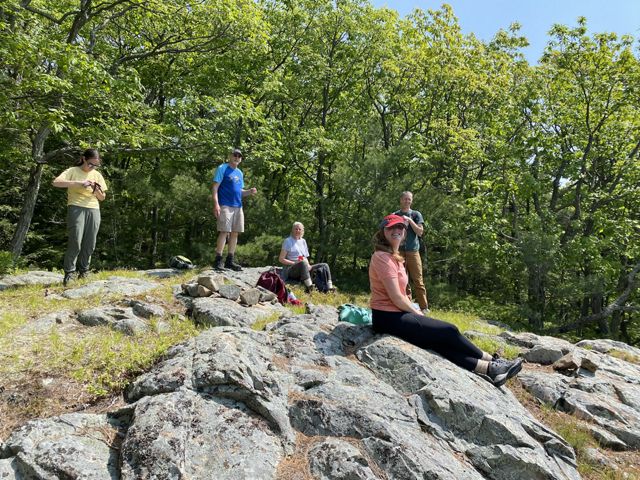
Genesee Valley Conservancy
The Genesee Valley Conservancy is launching a cooperative program to connect and expand lands already owned by New York State to further conservation and climate resilience efforts in their region. For its first project in this program, the organization is using funding from The Nature Conservancy’s Climate Resilience Grant Program to acquire 200 acres of wetland in the Town of Richmond, located in western New York’s Ontario County. The land will eventually be transferred to New York State and integrated into the 717-acre Honeoye Creek Wildlife Management Area.
For this project, funds from The Nature Conservancy will support costs associated with caring for the 200 acres of wetland while Genesee Valley Conservancy completes the final land transfer with New York State. Benjamin Gajewski, executive director of Genesee Valley Conservancy, said, “The funding provided by The Nature Conservancy is allowing our organization to step in and ensure that this important piece of land is protected and cared for. Conserving this wetland will help the Town of Richmond in continuing to provide clean drinking water for surrounding communities. The town has also sustained substantial damage from increasingly bad storms. As we adapt to climate change, preserving this key piece of natural infrastructure will only increase the resilience of our local communities and will hopefully buffer neighborhoods from future flooding.”
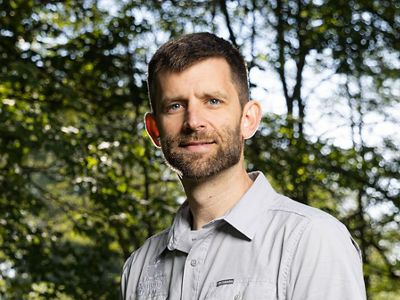
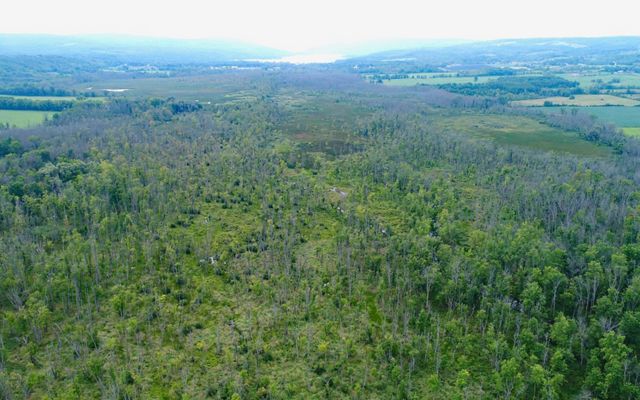
Algonquin to Adirondacks
The Algonquin to Adirondacks (A2A) Collaborative is a U.S., Canadian and First Nations partner organization that works with scientists, policy-makers and a variety of conservation groups to protect and enhance the unique ecological features and functions of the A2A region. A2A is a young organization, and funding from The Nature Conservancy’s Climate Resilience Grant Program is supporting crucial organizational capacity building for the Collaborative.
A2A is currently using Geographic Information System (GIS) tools and analysis to build an interactive map of the full corridor—detailing priority areas for connectivity and identifying potential threats. The map is expected to be an essential tool that A2A will share with more than 50 partner organizations. Funding from The Nature Conservancy will help initiate a pilot road ecology study and support the development of new resources, data and tools that will help A2A connect landscapes critical for biodiversity and climate resilience.
“As a young organization trying to get many projects off the ground, it has been incredibly helpful to receive flexible funding from The Nature Conservancy,” said an A2A board member, Bill Brown. “Up until now, we’ve never been able to complete a full GIS analysis of the region, and the Climate Resilience Grant Program has changed that. This funding is enabling us to improve the way we work, and it will allow A2A to be more strategic and comprehensive. New mapping and tools mean that we can lead efforts that not only focus on land connectivity but also increase carbon capture, flood protection, community recreation and more.”

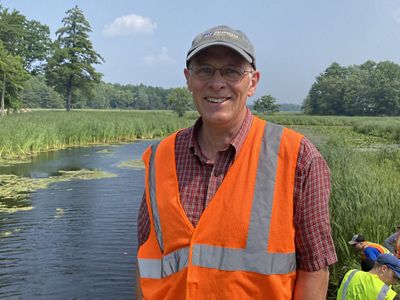
Orange County Land Trust
The Orange County Land Trust is working to purchase a large parcel of unfragmented forest located in the Town of Deerpark, New York to add to the City of Port Jervis’ Watershed Park and Recreation Area. When the project is complete, the City of Port Jervis will own the 423-acre parcel, and the Land Trust will have a conservation easement and a public access easement on the land.
“This project will make a meaningful impact for land connectivity and climate resilience in New York,” said Kyle Sanduski, Orange County Land Trust’s director of conservation. “We’re grateful for The Nature Conservancy’s support, along with other key partners, in helping to make this acquisition possible. Adding 423 acres to the City of Port Jervis’s Watershed Park and Recreation Area means that our community, and the nature around it, will now have roughly 3,000 acres of protected forested land to thrive. By expanding protections on this magnitude of scale, we’re adding a significant portion of land to the regional Resilient and Connected Network that spans all the way from New Jersey to the Catskills.”
From climate resilience, to community health, to outdoor recreation, this land acquisition will benefit wildlife and expand the Watershed Park and Recreation Area for local visitors to enjoy. In partnership with the Outdoor Club of Port Jervis, miles of additional trail will be constructed, increasing accessibility and leading to new scenic vistas throughout the landscape. Conserving this land will also protect a key source drinking water for neighborhoods and ensure that biodiversity—including threatened species and vernal pools—remains intact and healthy.
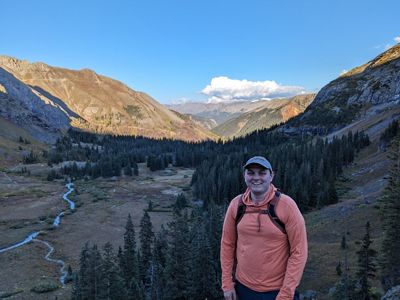
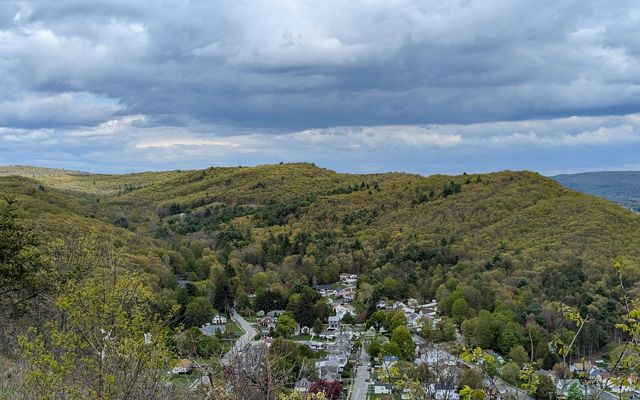
Apply Now
The 2026 Climate Resilience Grant Program application cycle is now open. To apply, or for additional information about the Climate Resilience Grant Program, visit the program’s full application page, or email us at CCCFund@tnc.org. Organizational Eligibility Requirements: The program is open to all non-profit 501(c)(3) conservation organizations, municipalities, Tribal entities and local and state agencies. Conservation organizations that are not accredited by the Land Trust Accreditation Commission may need to provide additional information prior to receiving a grant.
